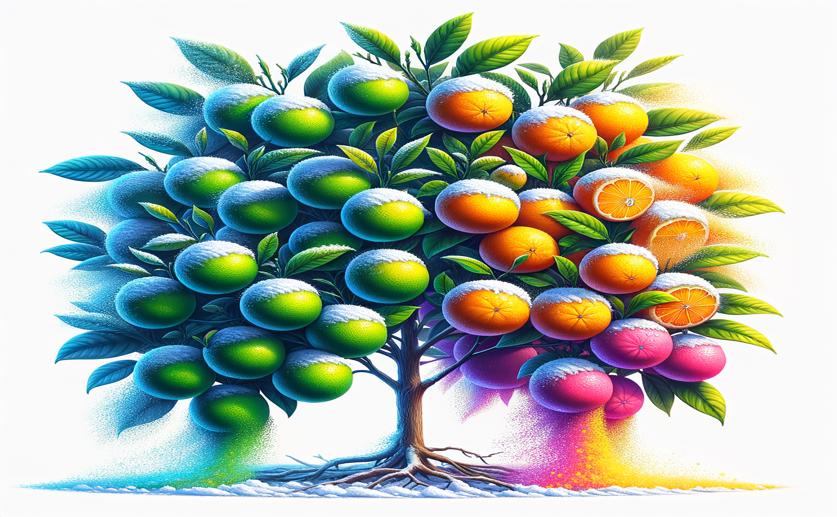
How Cold-Responsive Factors Help Citrus Fruits Produce More Colorful Pigments
Greg Howard
26th June, 2024

Image Source: Natural Science News, 2024
Key Findings
- The study from Zhejiang University focused on how low temperature (LT) promotes anthocyanin production in blood oranges
- Researchers identified two key proteins, CsERF054 and CsERF061, that activate the gene CsRuby1, which is crucial for anthocyanin biosynthesis
- CsERF061 also forms a protein complex with CsRuby1 to further enhance the production of anthocyanins, revealing a dual regulatory mechanism
References
Main Study
1) The R2R3 MYB Ruby1 is activated by two cold responsive ethylene response factors, via the retrotransposon in its promoter, to positively regulate anthocyanin biosynthesis in citrus.
Published 23rd June, 2024
https://doi.org/10.1111/tpj.16866
Related Studies
2) Light-responsive transcription factor PpWRKY44 induces anthocyanin accumulation by regulating PpMYB10 expression in pear.
3) Jasmonate induces biosynthesis of anthocyanin and proanthocyanidin in apple by mediating the JAZ1-TRB1-MYB9 complex.
4) Dietary flavonoid intake, total antioxidant capacity and lipid oxidative damage: A cross-sectional study of Iranian women.



 26th June, 2024 | Greg Howard
26th June, 2024 | Greg Howard